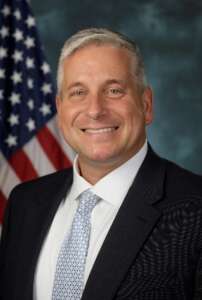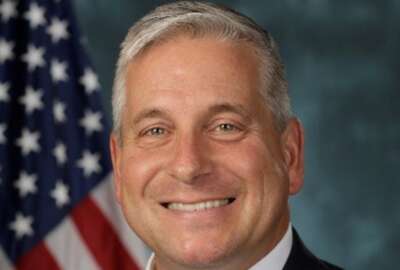RPA reducing the burden on DHS contracting officers
The Homeland Security Department’s procurement shop was busier than ever last year, spending almost $24 billion on about 60,000 transactions.
The Homeland Security Department’s procurement shop was busier than ever last year, spending almost $24 billion on about 60,000 transactions.
Fiscal 2023 is expected to be even busier.
This is why Paul Courtney, the chief procurement officer at DHS, has made innovation one of his three priority areas along with workforce and process improvements.

“COVID has helped us realize just how prepared a lot of our technology solutions already were. We developed an electronic contract filing system before the pandemic, and we quickly realize how critical it is for the continuity of our operations. We’re honing it, making it better, but we had that in place before the pandemic. We were already there in a lot of areas, but the pandemic made us realize that we must continue to do this great things, but also focus on things to make life better,” Courtney said on Ask the CIO. “On the process improvements, over the last year or so we’ve looked internally about do we have unnecessary steps in our policy process that we can eliminate? We looked at if it takes 12 stops for document to get approved, probably halfway along that way, people probably are just checking the box. We’re looking for those areas where we are adding value and where we just are providing unnecessary steps. We want to continue to streamline that to get our staff to really focus on the important job or procurement within the department.”
The electronic contract filing system, in part, relies on robotics process automation (RPA) to upload documents.
This RPA is one of several the CPO’s office has initiated over the last few years.
Reducing the paperwork burden
Courtney said DHS has borrowed the DORA RPA from the Army to perform contractor responsibility determinations.
“We partnered with the Army to conduct an initial six month pilot of DORA with the Immigration and Customs Enforcement Office. It’s been phenomenal. So far, they’ve done just tremendous work with it, the feedback received so far has been highly favorable,” he said. “DORA is easy to use and saving a significant time for a workforce. We’re evaluating how we can expand the use of DORA departmentwide. This is a case where it’s not making any determinations for us to just provide the data quickly back to our workforce.”
Another RPA effort is with the U.S. Customs and Border Protection directorate to use a bot to automate rules based tasks and activities lessen the administrative burden on employees.
Courtney said the project, called “D the bot” started in 2021 and now is available to all CBP procurement offices.
“It has performed 200-plus actions in deobligated over $30 million. It really reduced the time manually spent working this process by almost 70%,” he said. “It used to take an hour for a staff member to do a deobligation on average, now it’s just minutes to have that done.”
A third example is just getting started. Courtney said DHS recently awarded three contracts to small businesses to provide artificial intelligence tools to improve how the agency conducts market research.
“The AI for market research solution was brought to bear through a collaborative partnership with several other federal agencies, such as the Office of Federal Procurement Policy and the Office of the Director of National Intelligence (ODNI),” he said. “These are commercial vendors who built the software that will go into SAM.gov, the Federal Procurement Data System (FPDS) and other public facing public open source information, and give users a quick view of the marketplace. Whether it’s cybersecurity drones, office supplies or whatever few keywords they put in, users will see a list of vendors who have previously been awarded contracts with the federal government for similar requirements.”
He said the data will include business type, like 8(a) or women-owned small business, the dollar amount of the previous contract award and the other agencies the vendor has worked with.
Contracting officers also will be able to drill down into the data to find out more information.
Desire for AI tools driving changes
Courtney said he expects the technology to help the workforce save time, focus on higher value work and increase the quality of their market research.
“This won’t be just used by the procurement workforce, will be used by an entire acquisition workforce,” he said. “Our next step is to pilot these solutions now through June, just to measure the time saved and the quality of the actual market research.”
All three of these examples, Courtney said, came from the workforce’s desire to use more advanced analytical tools and artificial intelligence. At the same time, DHS is trying to further empower its acquisition workforce to make better and, sometimes, faster decisions.
He said sometimes that means using more of risk-based approach with the procurement strategy roadmap (PSR).
“The idea behind that PSR was before a formal acquisition plan goes through all the stops, it has to make it to the chief procurement officer and the senior procurement executive to get a conversation going. Over time, we’ve realized that the components put some additional steps in place so the informal procurement strategy roadmap became a very formal procurement strategy roadmap, almost as detailed as the acquisition plan,” he said. “In conversations with the heads of contracting throughout the department, we took a step back and said, ‘is there a better way to do this?’ We’ve now made the procurement strategy roadmap a voluntary conversation. If you want to have a conversation before the PSR gets to us, let’s have it, but we’re not going to force it on you.”
Additionally, there are steps in the process that DHS components put in place, thus creating a long road to get an acquisition plan approved, which adds to the delays in acquisitions.
“We’re looking at the power of workforce to make sure that it doesn’t take that long to reach the signatory folks on an acquisition plan,” he said. “We want to empower and have a workforce be ready to lead as they’ve always done and to give them the ability to do so there. There are complicated procurements that the department does so we meet with our heads of contracting monthly and we’ll take that time to have those conversations, and help that with our collective wisdom of all the procurement expertise in the department. We want to make sure we continue to empower the workforce to make those decisions, and that we’re here to help them.”
Copyright © 2025 Federal News Network. All rights reserved. This website is not intended for users located within the European Economic Area.
Jason Miller is executive editor of Federal News Network and directs news coverage on the people, policy and programs of the federal government.
Follow @jmillerWFED








